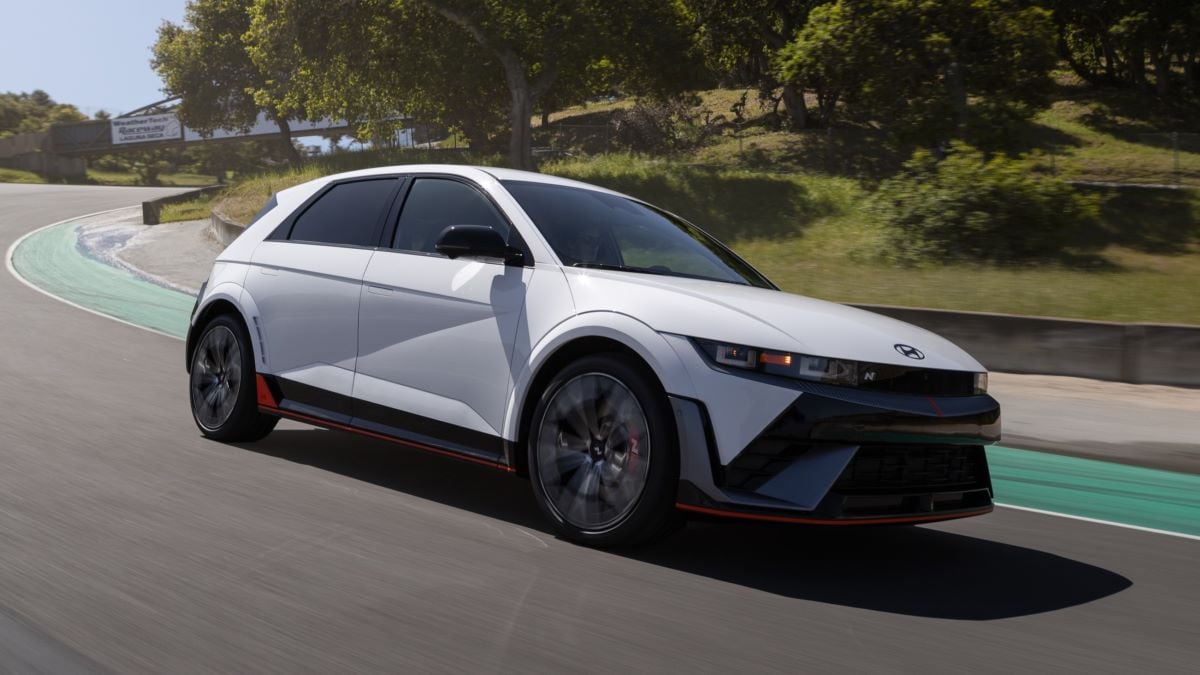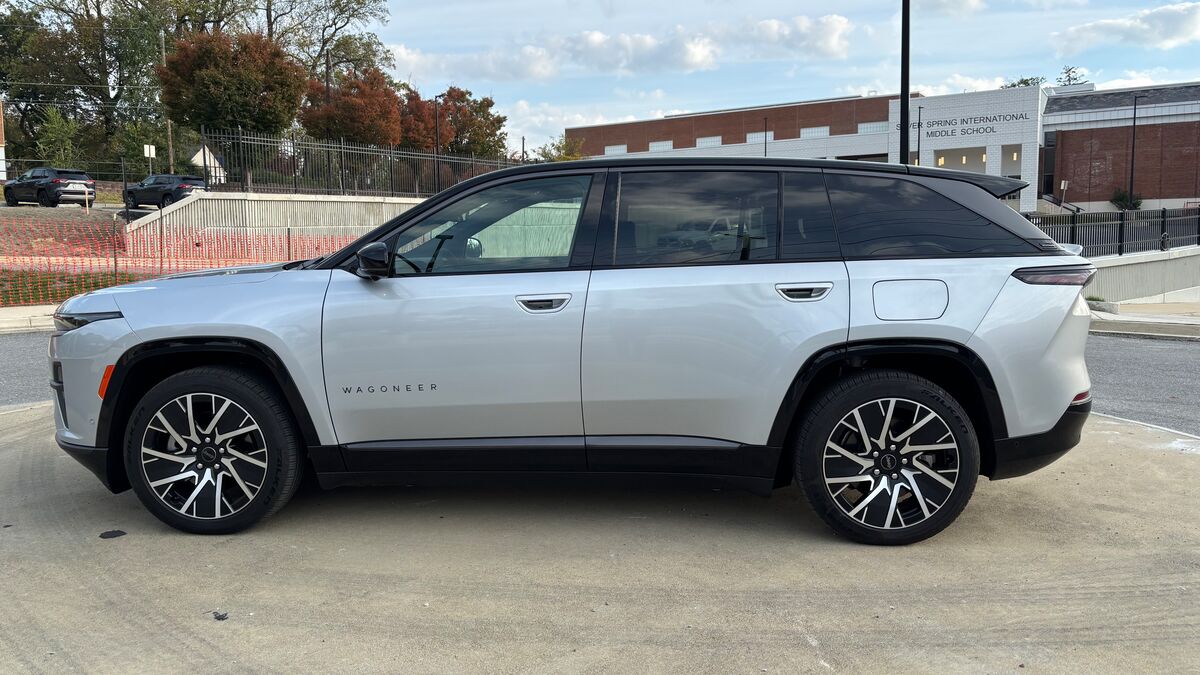It’s fast. It’s precise. It’s battery-powered. The 2025 Hyundai Ioniq 5 N is a zero-emissions track-day machine – unless you count the smoke from burning tires. This high-performance variant of Hyundai’s excellent Ioniq 5 has a drift mode for rubber-melting tailslides – not what we usually expect to find in an electric car.
The potential for electric motors to generate lots of power and fearsome acceleration times is common knowledge. What Hyundai has done with the Ioniq 5 N is to create a car around those virtues that can contain and exploit such muscle. The 5 N is the most potent production car Hyundai has ever built, making a maximum of 641 horsepower and 568 lb-ft of torque. It will blast from a standstill to 60 mph in 3.25 seconds.
Keeping Track
Until now, electric cars have been fine on the road, but few people have wanted to take a Tesla Model S, for example, onto a race track for a succession of quick laps. Road cars and track cars are usually different animals — what works for one won’t work so well for the other. The Ioniq 5 N changes that.
I drove this creature on Weathertech Raceway Laguna Seca, a demanding track with the famed Corkscrew downhill bends (I know, lucky SOB). And, yes – the speed, grip, steering, and braking are genuinely awesome. Properly exploiting the limits of this car demands the experience and talent of an accomplished racing driver.
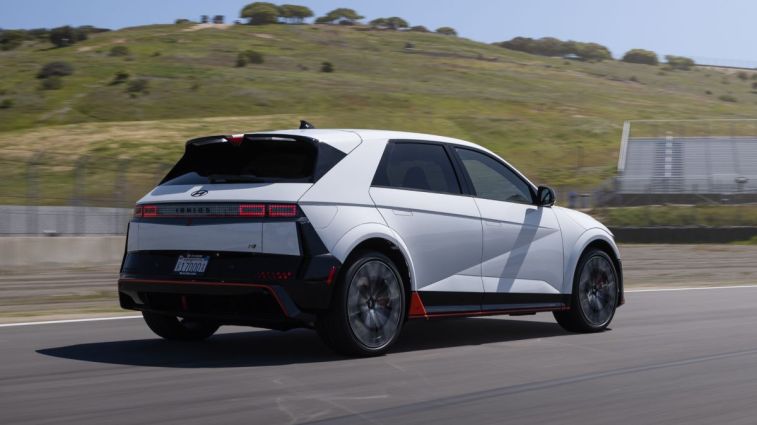
Pressing the boost mode button on the steering wheel accesses the maximum output. This boost is only available for 10 seconds, but that’s a long time on a straight stretch of race track. In its un-boosted form, the Ioniq 5 N produces 601 hp and 545 lb-ft of torque — still nothing sniff at.
The Ioniq 5 N isn’t just fast over one lap, followed by an energy conservation mode. It keeps going. It will do consecutive hot laps of the Nürburgring North Loop, that scary 12.9-mile track in Germany where the Ioniq 5 N underwent some development work. In everyday use, Hyundai claims a maximum range of 221 miles. The battery will also take on a substantial range in just 18 minutes.
N Is for…
N is Hyundai’s go-faster division, like BMW’s M or AMG at Mercedes-Benz. Not so long ago, Hyundai was making Camry and Corolla wannabes. Now, it’s come up with a unicorn, an electric car that works on the track.
The Nürburgring has provided some inspiration, while an evocative Korean word (meaning power or performance or something similar) also begins with an “n” sound.
The good N people have added more welding points and structural adhesives for a stiffer body, changed out the standard suspension for a computer-controlled adaptive version with a lowered ride height, employed an electronic limited-slip rear differential to enhance traction, upgraded the brakes, installed a bespoke steering system, fitted sport seats, and attached a few aerodynamic parts for more downforce. They even configured the battery to deliver energy differently for sprint runs or longer-term endurance racing. Everything works together beautifully.
Street Life
None of those changes compromise the Ioniq 5 N’s demeanor on regular roads. The adaptive suspension can be comfortable and controlled. The seats are pleasant enough for long drives. The brakes aren’t snatchy. Outward vision is superb, and the infotainment system is a great travel companion. The cabin is roomy and high-quality.
Target Audience
Hyundai doesn’t seem too bothered about who will buy the Ioniq 5 N. The company has an “if we build it, they will come” philosophy. The car exists because Hyundai made it happen, and that’s good enough right now. Before anyone starts moaning about spending $67,475 (including destination) on a Hyundai, try finding another track-worthy car with more than 600 hp for that kind of money.
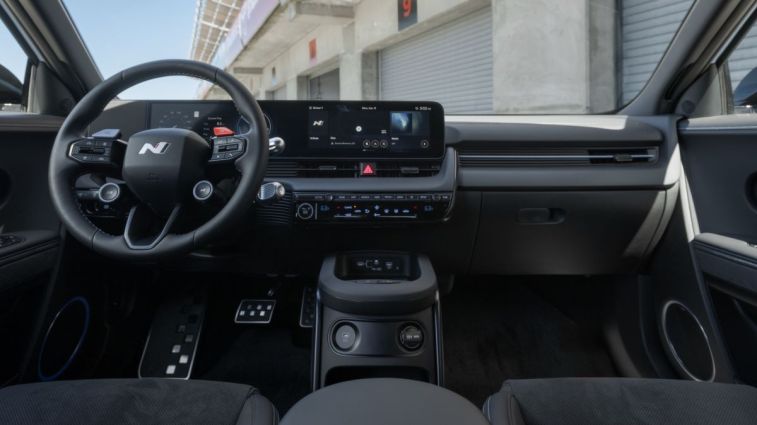
A Porsche 911 GT3 RS could go straight from the dealer to Laguna Seca (or any other track) and blast to 60 mph in three seconds, thanks to 518 hp. But it will cost over $240K, plus the gasoline bills. A BMW M3 Competition will be more tolerable than a 911 GTS RS on public roads, and it pushes its 503 hp to reach 60 mph in 3.4 seconds. Then again, it’s about $85K with all-wheel drive (AWD).
Pounds of Flash
The battery-laden Ioniq 5 N is 800 pounds heavier than the BMW M3 Competition xDrive, and you can feel that mass beneath you.
Chances are that if I had the BMW at Laguna Seca as well, then its shortcomings would come into sharper relief. And the Ioniq 5 N would probably produce the fastest lap times. But I wouldn’t be surprised if I enjoyed the BMW more, mainly because of its relative lightness.
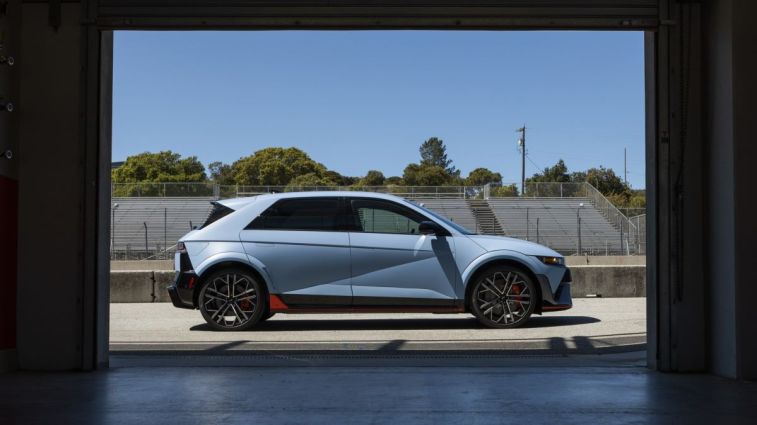
While I’m griping, the Ioniq 5 N makes engine/exhaust noise to accompany its sporty performance — all artificial. I wished it didn’t. You can switch it off, but I never found the right menu in the infotainment system.
Unicorn Buys a Unicorn Car
The 2025 Ioniq 5 N is an exceptional piece of engineering. It’s capable of exciting speed yet is still practical, comfortable, and safe enough for a family. Like Hyundai, I’m not sure who’s going to buy it. But whoever it is, they’re in for some fun times.
